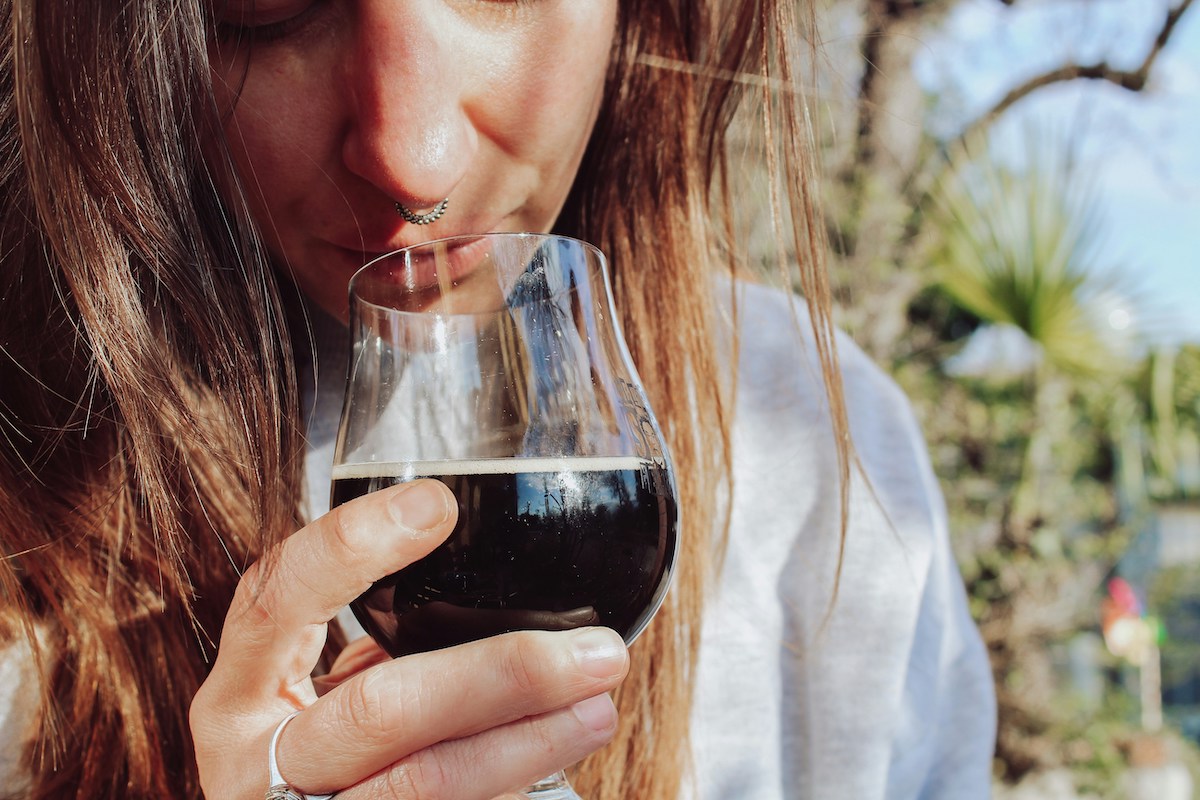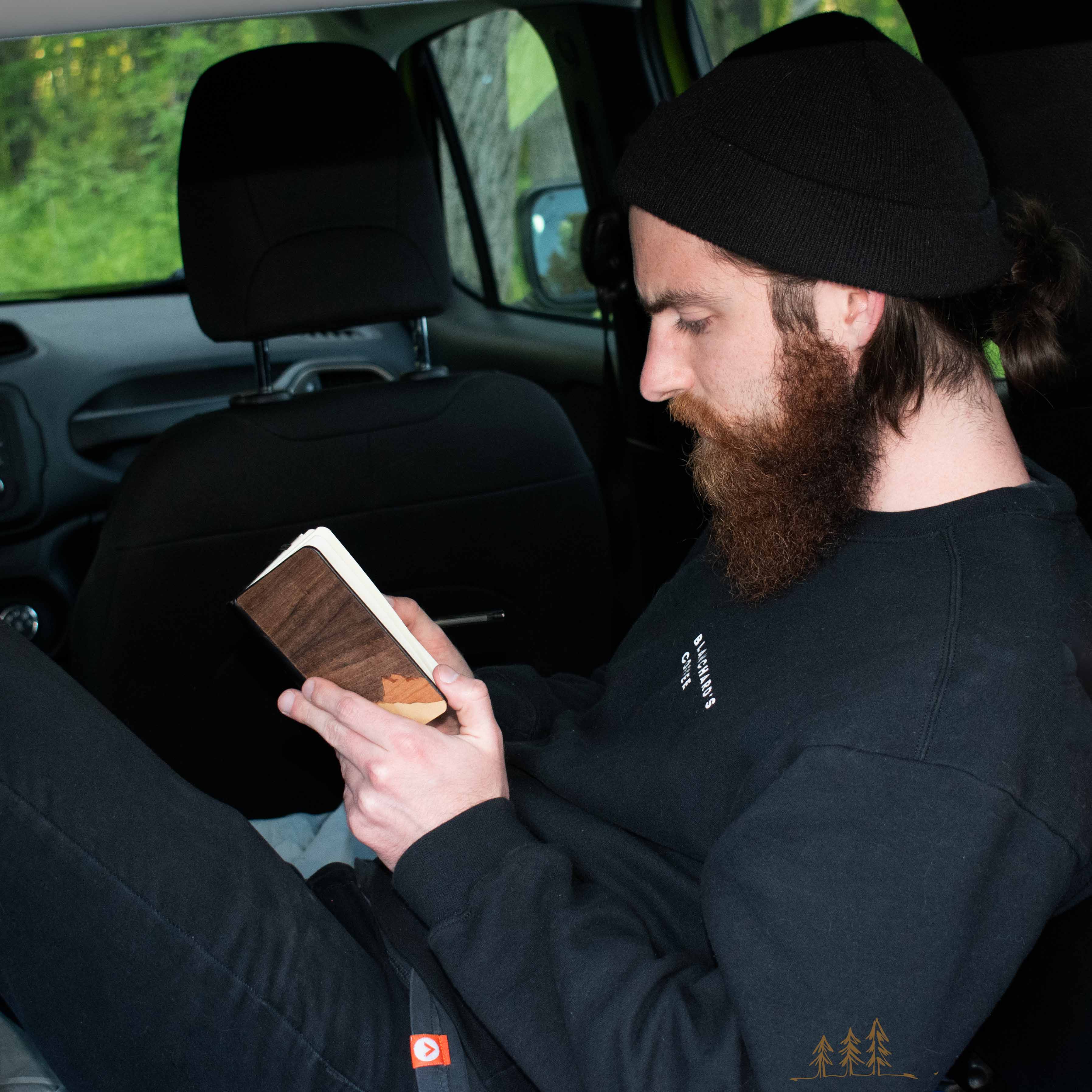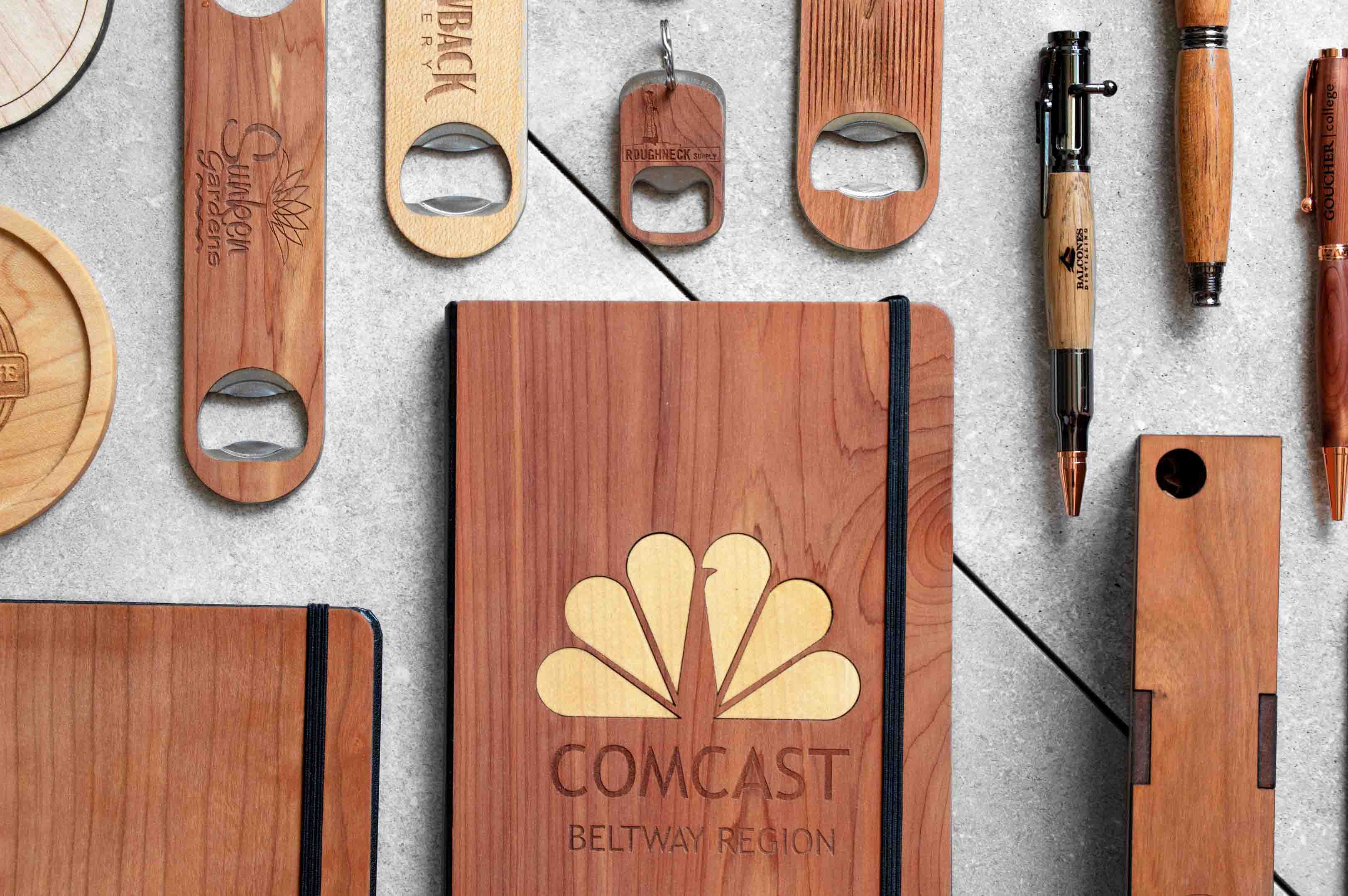
How Your Gifts Are Made: Part I
By Joshua Epling, 4 min reading time

By Joshua Epling, 4 min reading time
Have you ever wondered how your favorite wooden gifts are made? We have gotten a bunch of questions over the years about how our products are made, so this week we wanted to tell you all about our process on the laser side. Keep an eye out for a blog about how we make our pens too!
We sell a lot of different products here at Autumn Summer Co. and often get questions on the process behind the creation of each one. Each product is made here in our shop in Maryland, and we take a huge amount of pride in every piece.
For this article, we will focus primarily on the laser side of production, and we will explain our pen making process in a separate blog so we can talk about the distinctions between them.
The first step to understanding the products we create here is to get a little bit of an understanding of the materials we use. All of our products are made from real American hardwoods. The main four types of wood we use for our products are maple, cherry, walnut, and cedar, as seen in the picture below. A lot of the wood is veneer, but we do have some larger sheets that we use for products cut with our CNC. Additionally, most of our pieces have a metal interior, and that is all stainless steel that is cut using a water jet.

A lot of people think that Veneer is a "fake"wood. We can assure you that it is a real wood, it is just thinner to make it easier to cut and work with. Wrapping a flask in a full piece of wood would be uncomfortable, difficult, and a tedious process, but veneer allows us to do it easily, as the thin cut makes it easier to bend as well.
After a customer places an order online, we start with the cut metal and we prepare the type of wood the customer has requested. If the customer has included it, their personalized icon or logo will go into our computer software that tells the laser the pattern that it needs to cut.

We also have plenty of premade designs, like our beautiful mountain range, that can be placed alongside the logo. We place the sheet of veneer into our laser, and secure it in place.
The laser then cuts the wood, and engraves the designs. We can then remove it, and glue it to our stainless steel interiors with some super strong glue. This leaves us with an almost finished custom piece.

In one of our last blogs we briefly touched on the engraving process for a logo, and how that works. We mentioned how difficult colors can be, but we wanted to illustrate that a little bit better. If a part of an image is not completely white, then it will come out engraved in black. You can see in this picture there is a lot of yellow, which we wanted to be engraved as black, and a lot of white.

However, the white in the image wasn't quite white, so it engraved as black during the first test run. We made the white color blue instead to highlight what parts would need made completely white and the difference was incredible. The example below shows the before and after versions of this logo to clarify what we mean.

The final steps are some of the most satisfying to watch. When the products are glued, we gently use sandpaper to sand the burn marks left by the laser. This makes the edges of the designs more smooth. We also use the sand paper to smooth the edges of each piece for a comfortable transition from wood to metal. This rounds the edges of the wood and makes it much more comfortable to hold.
The final step to creating each item is to finish it with some danish oil. This gives it a very natural finish, allowing the natural wood to still be felt, while also making the color slightly more distinct and vibrant. Not only does it serve to beautify the piece, the danish oil also helps to protect the products.

The final step to getting our products ready for you is putting each in its own individual packaging.
All of our products are unique in their own ways, as no piece of wood is the same. However, the process for making most of our products is very similar. Our pens are very different, but we will save that for next time. If you have any questions about the process, or an order feel free to send us an email or leave us a comment!


Fancier than a 6-pack, but cheaper than a fermentation tank—discover our 5 favorite gift ideas for the beer nerd in your life.

I’ve never done things in a way considered “normal,” and this is no exception. From day one, I had a feeling that I would sell Autumn. But until re...

Corporate gifting allows businesses of every size to cultivate stronger bonds with employees, clients and prospective clients. Autumn Woods Co. is ...